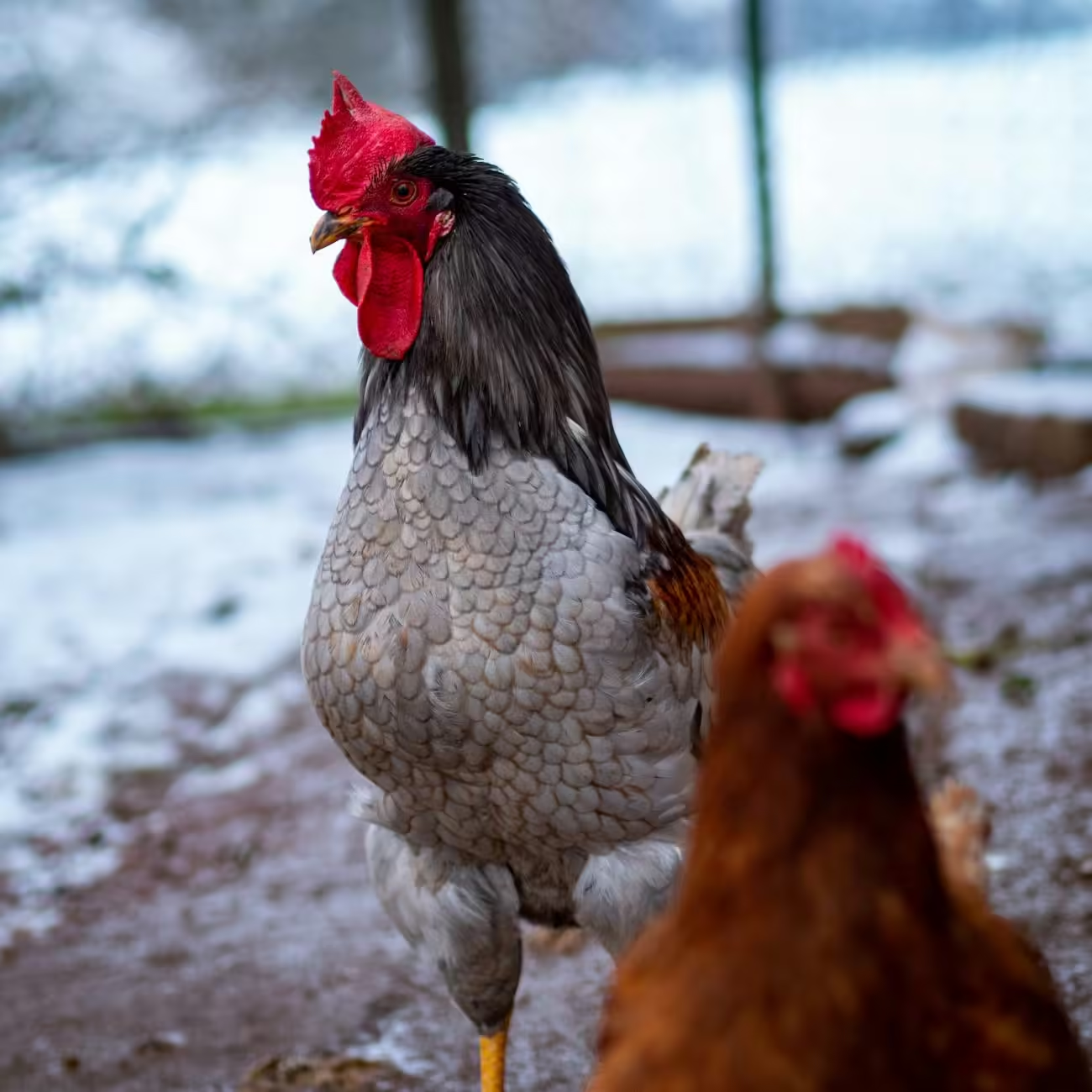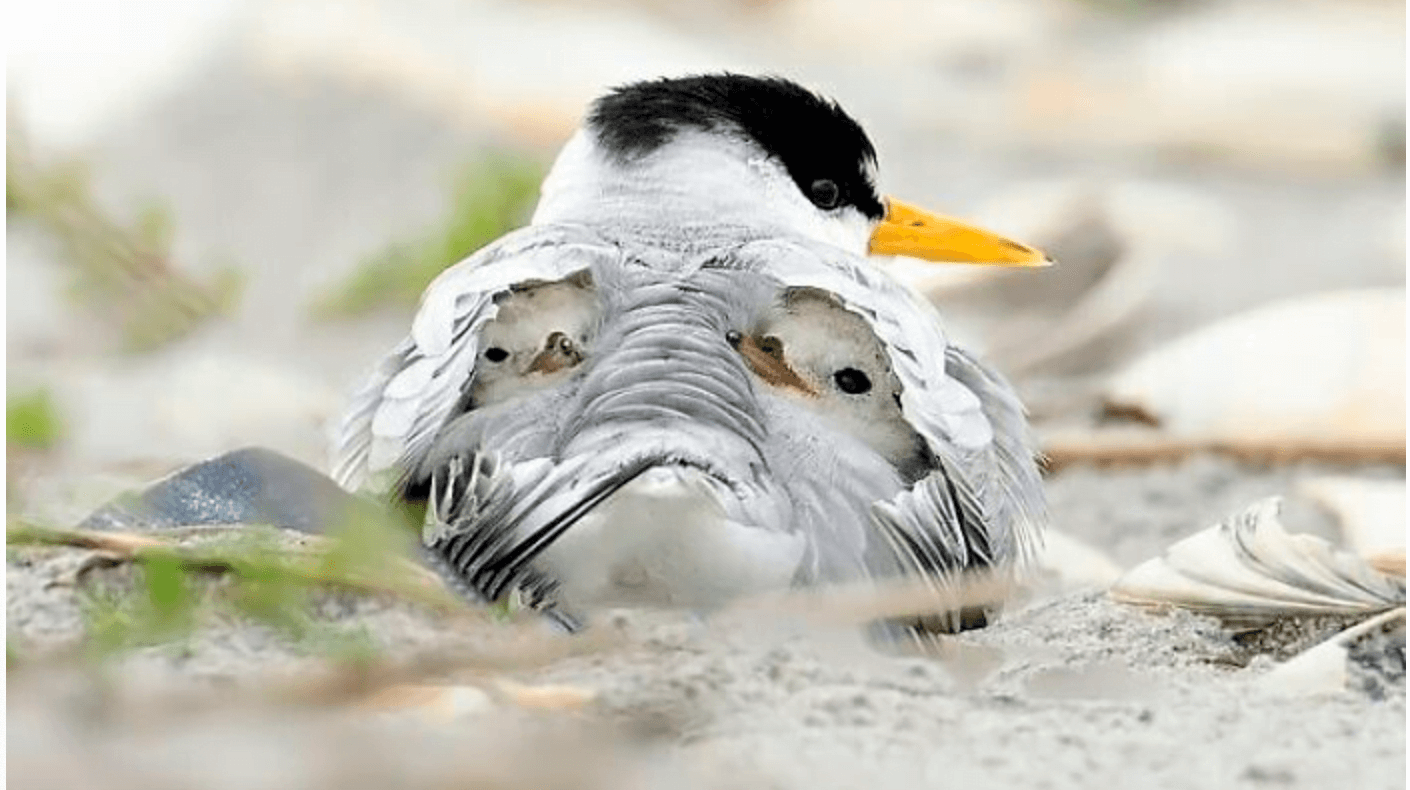If you’re raising poultry, whether for eggs, meat, or simply as pets, how to manage poultry in changing weather can be one of the most important—and sometimes challenging—parts of keeping a healthy, productive flock.
Poultry birds are highly sensitive to environmental conditions, and seasonal shifts in temperature, humidity, and daylight hours can affect everything from their health to their egg production.

In this guide, you’ll learn how to manage your poultry in changing weather conditions throughout the year. With a few adjustments, you can help your flock thrive, no matter the season.
You may also be interested in:
- How to protect your flock from poultry pests and predators
- How to manage your poultry vaccination schedule with Kukufarm
- A comparison of poultry systems by animal welfare
- How to select the best poultry housing system
1. Spring: Managing Poultry as Temperatures Begin to Rise
As winter recedes and spring brings warmer temperatures, your flock will need to adjust to the changing environment. The key to managing poultry in changing weather during spring is balancing those warm days with the still-cool nights.
What to Watch For:
- Temperature Fluctuations: While days may warm up, nights can still be chilly. Spring weather can be unpredictable, so you’ll want to keep a close eye on temperature changes.
- Pest Activity: As the weather warms, pests like flies, ticks, and mosquitoes will become more active, so it’s time to get ahead of them.
- Laying Season: Spring is when your hens might increase egg production, so you’ll want to make sure they have everything they need to stay healthy.

How to Manage:
- Keep an Eye on Temperature: Even though the days are warmer, it’s still a good idea to monitor nighttime temperatures. You may need to add extra bedding or use a heat lamp if it’s particularly cold at night.
- Improve Ventilation: Spring brings humidity, and you’ll want to ensure that your coop is well-ventilated to prevent any buildup of dampness, which can lead to respiratory problems.
- Pest Control: Pests are a springtime issue. Therefore consider using natural pest control like diatomaceous earth around the coop and nesting areas to prevent infestations. Furthermore, make sure you clean the coop regularly to minimize places for pests to hide.
2. Summer: Managing Poultry in Hot Weather
When summer hits, the rising temperatures can create a lot of stress for your flock. Managing poultry birds in changing weather during the hotter months means ensuring they stay cool and hydrated, and avoiding heat stress.

What to Watch For:
- Heat Stress: Poultry can suffer from heat stress if they are exposed to high temperatures for extended periods. Consequently, heat stress can lead to reduced egg production or, in extreme cases, even heat stroke.
- Increased Water Needs: Your birds will drink more water in the heat, so you’ll need to keep an eye on their water supply.
- Shade and Shelter: Your chickens will need plenty of shade to escape the sun and stay cool during the hottest parts of the day.
How to Manage:
- Provide Ample Shade: Make sure your chickens have access to shady areas throughout the day. For instance, you can use tarps, shade cloths, or trees to block out the sun in both the coop and the outdoor run.
- Hydration Is Key: Always make sure your birds have access to fresh, cool water. For example you might want to provide multiple water containers or refill them more often on really hot days.
- Cooling Options: If you’re in an area with extreme heat, you can set up a small pool or a damp, cool area where your chickens can splash around or cool their feet. Moreover, adding electrolytes to their water can help them stay hydrated and avoid heat stress.
- Adjust Feeding Times: To help your flock cope with heat, feed them in the early morning or late evening when temperatures are cooler. In other words, avoid feeding them during the heat of the day to reduce their internal heat load.
3. Autumn: Preparing for Cooler Days
As the days get shorter and temperatures begin to drop in autumn, you’ll need to start preparing your flock for the upcoming winter. Autumn can be a transitional period for your poultry, as you manage the balance between cooling temperatures and the changing needs of your birds.
What to Watch For:
- Colder Nights: Early autumn can still bring chilly nights, which means your birds will need some extra warmth.
- Molting: Many chickens molt during the fall, which can affect their energy levels and egg production.
- Decreased Daylight: The shorter days may reduce the amount of natural light your chickens receive, which can affect their laying cycle.
How to Manage:
- Prepare for Cold: Start making adjustments to your coop for colder temperatures by adding extra insulation, such as straw or hay, to help retain heat. In addition, make sure the coop is draft-free but still ventilated to avoid moisture buildup.
- Increase Protein: As your birds molt, they need extra protein to help grow new feathers. Furthermore, you can offer them higher-protein feed or supplements like mealworms to aid in this process.
- Artificial Lighting: If you want to maintain consistent egg production through the winter months, consider adding supplemental lighting in the coop to simulate a longer day and keep your hens laying.

4. Winter: Protecting Poultry in Cold and Harsh Conditions
How to Care for Chickens in Winter. Specifically, cold temperatures, snow, and ice can create a lot of stress for your flock, but with the right preparations, they can weather the season just fine.
What to Watch For:
- Extreme Cold: Winter temperatures can be harsh, and prolonged exposure to cold can lead to frostbite, especially in your chickens’ combs and wattles.
- Snow and Ice: Snow accumulation can block access to outdoor areas, while ice can make the ground slippery and dangerous for your birds.
- Short Daylight Hours: The long nights and short days of winter can reduce natural light, which affects your hens’ laying cycles.
How to Manage:
- Insulate the Coop: Insulation is crucial in winter. To begin with, you can achieve this by adding straw bales, foam panels, or other insulating materials to help keep the coop warm. Secondly, make sure the coop is well-ventilated to prevent condensation, but also keep drafts at bay to protect against frostbite.
- Water Management: Keep an eye on your water containers to prevent them from freezing. Importantly, heated waterers are a good investment, or you can check water bowls multiple times a day to make sure they remain unfrozen.
- Extra Feed: Your chickens will burn more energy trying to stay warm. As a result, you may need to increase their feed intake during the winter months. Additionally, offer higher-calorie foods like cracked corn or warm grains to help them generate extra body heat.
- Limit Outdoor Time in Extreme Weather: While chickens are hardy, it’s important to limit their exposure to extreme cold or snow. Particularly, if conditions are too harsh, keep your flock in the coop or provide them with a sheltered outdoor run.

Final Thoughts
Managing poultry in changing weather is all about paying attention to the unique needs of your flock as the seasons shift. Whether it’s the heat of summer, the cold of winter, or the transitional months of spring and autumn.
However, you can keep your chickens comfortable, healthy, and productive with a few simple adjustments. For instance, by preparing your coop, adjusting their feed, ensuring access to water, and providing shade or warmth as needed, you can help your flock thrive no matter what the weather throws your way.
Do you have any tips or strategies for managing poultry in changing weather? Let us know in the comments below!

